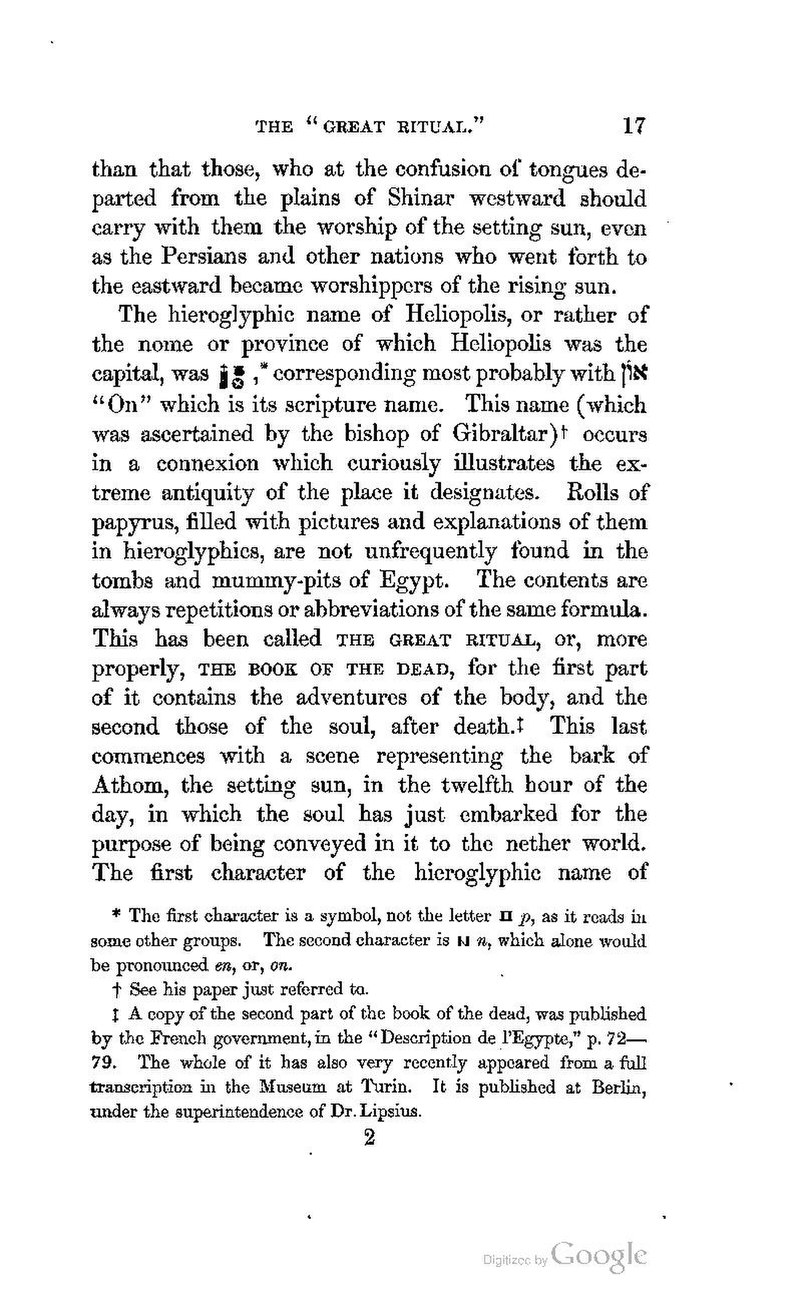than that those, who at the confusion of tongues departed from the plains of Shinar westward should carry with them the worship of the setting sun, even as the Persians and other nations who went forth to the eastward became worshippers of the rising sun.
The hieroglyphic name of Heliopolis, or rather of the nome or province of which Heliopolis was the capital, was
| |
,[1] corresponding most probably with אוֹן “On” which is its scripture name. This name (which was ascertained by the bishop of Gibraltar)[2] occurs in a connexion which curiously illustrates the extreme antiquity of the place it designates. Rolls of papyrus, filled with pictures and explanations of them in hieroglyphics, are not unfrequently found in the tombs and mummy-pits of Egypt. The contents are always repetitions or abbreviations of the same formula. This has been called THE GREAT RITUAL, or, more properly, THE BOOK OF THE DEAD, for the first part of it contains the adventures of the body, and the second those of the soul, after death.[3] This last commences with a scene representing the bark of Athom, the setting sun, in the twelfth hour of the day, in which the soul has just embarked for the purpose of being conveyed in it to the nether world. The first character of the hieroglyphic name of
- ↑ The first character is a symbol, not the letter ⲡ p, as it reads in some other groups. The second character is ⲛ n, which alone would be pronounced en, or, on.
- ↑ See his paper just referred to.
- ↑ A copy of the second part of the book of the dead, was published by the French government,in the “Description de l'Egypte,” p. 72–79. The whole of it has also very recently appeared from a full transcription in the Museum at Turin. It is published at Berlin, under the superintendence of Dr. Lipsius.
2
